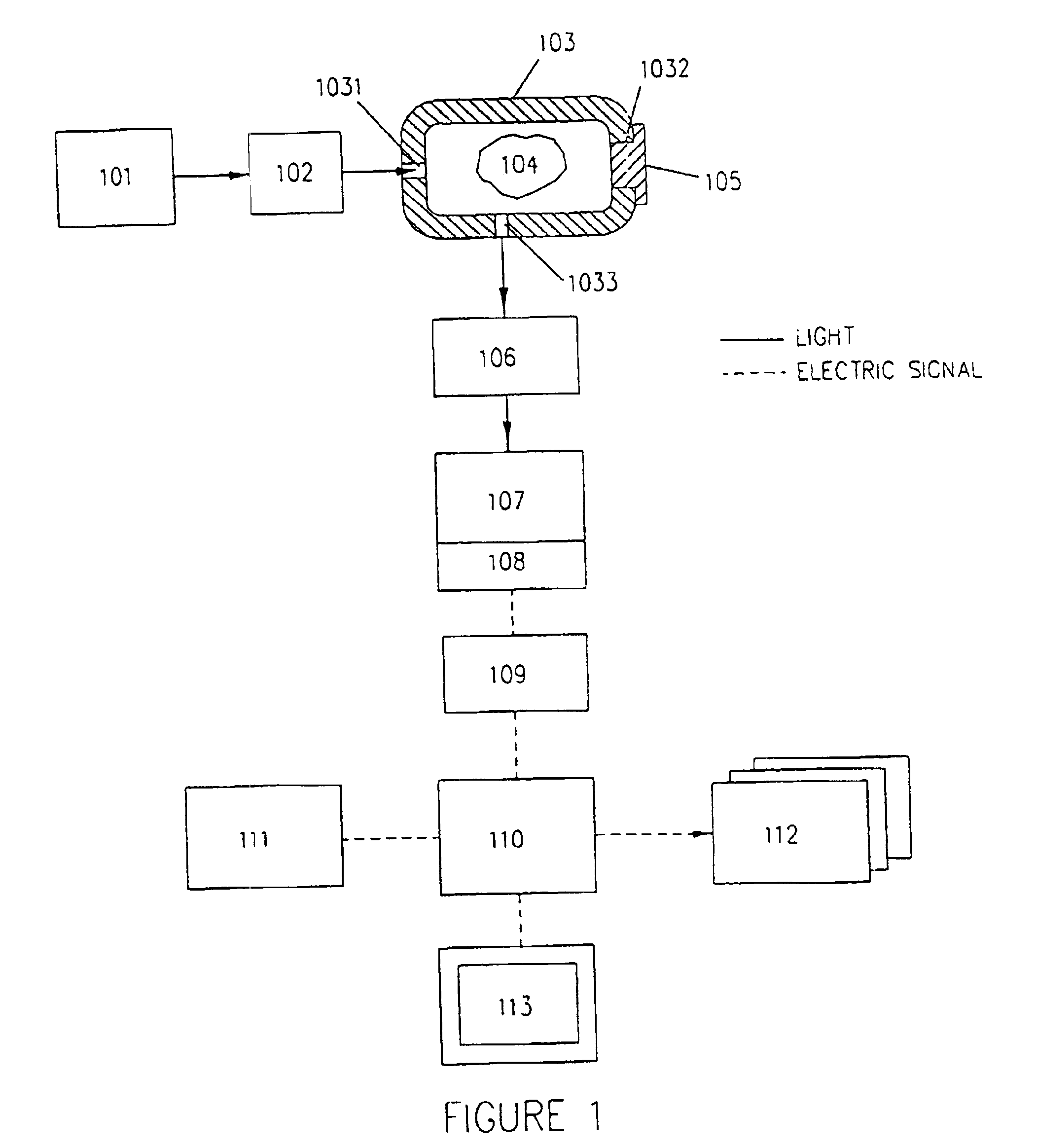Raman spectroscopic system with integrating cavity
- Summary
- Abstract
- Description
- Claims
- Application Information
AI Technical Summary
Benefits of technology
Problems solved by technology
Method used
Image
Examples
Embodiment Construction
[0049]The present invention relates to the field of non-invasive spectroscopic characterization and measurements of the chemical composition of samples. More specifically the invention relates to the use of Raman spectroscopy and an integrating cavity for the analysis of samples.
[0050]The invention provides an apparatus capable of efficiently collecting Raman scattered electromagnetic radiation from a range of samples, including large samples that have been excited with high level of total power of radiation. In this case, the high power beam of electromagnetic radiation is expanded prior to reaching the sample, thus avoiding high local intensity on any part of the sample.
[0051]The following description is of a preferred embodiment by way of example only and without limitation to the combination of features necessary for carrying the invention into effect.
[0052]According to one aspect of the present invention, Raman spectroscopy may be used to characterize the chemical composition o...
PUM
 Login to View More
Login to View More Abstract
Description
Claims
Application Information
 Login to View More
Login to View More - R&D
- Intellectual Property
- Life Sciences
- Materials
- Tech Scout
- Unparalleled Data Quality
- Higher Quality Content
- 60% Fewer Hallucinations
Browse by: Latest US Patents, China's latest patents, Technical Efficacy Thesaurus, Application Domain, Technology Topic, Popular Technical Reports.
© 2025 PatSnap. All rights reserved.Legal|Privacy policy|Modern Slavery Act Transparency Statement|Sitemap|About US| Contact US: help@patsnap.com



